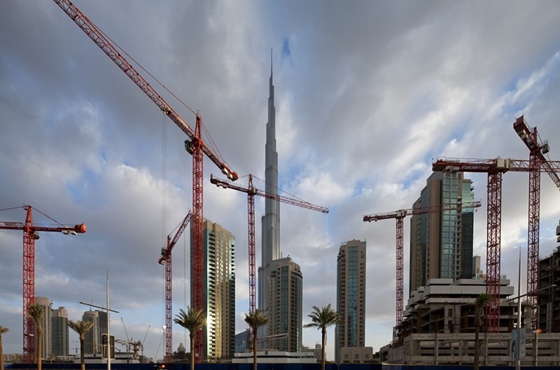The UAE’s gross domestic product (GDP) is expected to grow in excess of 4.5 per cent in 2014, the International Monetary Fund said.
“We have forecast 4.4 per cent GDP growth for the UAE economy this year, but expect an upward revision of the growth forecasts when we review the country’s economy later this year," Masood Ahmad, Director, Middle East and Central Asia Department of IMF said in Dubai.
While the GCC economies are expected to grow at about 4 per cent this year, GDP growth of oil exporting countries in the Middle East region will rise from 2 per cent in 2013 to 3.5 per cent in 2014 as non-oil activity remains robust and oil production stabilizes.
In the GCC non-oil sectors, particularly construction and retail trade will continue to drive economic activity, supported by high levels of public infrastructure spending and strong private sector credit. Oil production is expected to rise owing to strengthening global demand, challenges in restoring oil production in the non-GCC countries (particularly Libya), and a decline in global oil inventories caused in part by cold weather in North America. However the IMF expects a future recovery in non-GCC oil production and ongoing growth from unconventional sources in North America may weigh on GCC oil output and global oil prices.
Low inflation
In the GCC countries, softening import prices and a steady supply of low-wage expatriate workers will keep inflation at 3 per cent in 2014. But a rapid rise in housing costs in the UAE, particularly Dubai due to a recovery in the real estate sector warrants careful monitoring for overheating.
The IMF said Qatar’s inflationary pressures appear contained despite its large public investment program. Non-GCC inflation is high, mainly because of Iran and Yemen, but is expected to gradually decline in 2014.
Economic risks to the GCC region are broad and are largely linked to oil price outlook. On the downside, oil prices are prone to the risk of weaker-than-expected growth of global demand.
“A new risk to global activity is low inflation in advanced economies, especially the euro area, which could de-anchor inflation expectations, increase real interest rates, and raise debt burdens. Higher than- expected North American or non-GCC oil production would also place downward pressure on oil prices and GCC output,” said Ahmad.
In the region, pegged exchange rates in many countries mean that domestic policy rates track international rates. Yields rose in response to the May 2013 tapering announcement by the Federal Reserve, but have been stable since, even during the emerging market sell-off in early 2014. With investors increasingly differentiating across emerging markets, the large buffers and low financing requirements of the GCC countries put them in a position of relative strength. Qatar and the UAE have benefited from their status as regional safe havens.
Need for fiscal tightening
Large buffers would enable most GCC countries to withstand even large shocks to oil revenues over the near term. However, their fiscal surpluses are set to decline over time, in part because of rising public wage bills, falling oil prices, and, in some countries, generous energy subsidies.
According to the IMF for many regional oil exporters, energy subsidy costs exceed 10 per cent of GDP. Their reduction would free resources for productivity-enhancing spending. The IMF has also called on exploring alternative sources of revenues, such as corporate income or value-added taxes structured in a way that does not undermine diversification efforts.
Gulf News
7 May






















































